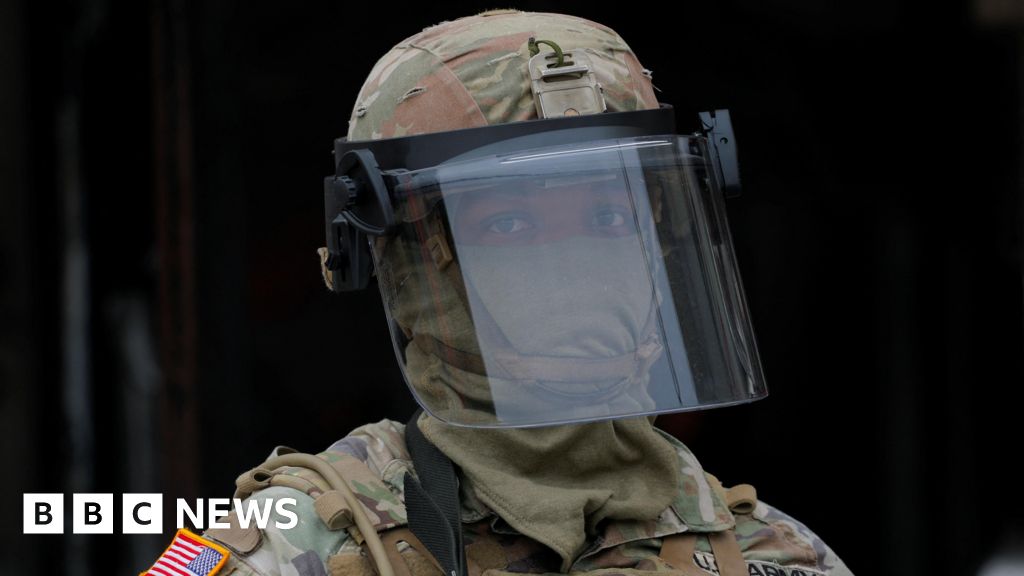ARTICLE AD BOX
Watch: How the search for the submarine is unfolding
By Kathryn Armstrong
BBC News
Rescuers searching for a tourist submersible near the Titanic wreck in the North Atlantic have heard "noises" in the area near where the vessel went missing on Sunday.
According to the US Coast Guard, a Canadian P-3 aircraft heard the sounds, which US Navy experts are analysing.
Underwater operations have been relocated to explore the source.
But so far the remote operated vehicles [ROV] have "yielded negative results", the Coast Guard said.
"Additionally, the data from the P-3 aircraft has been shared with our US Navy experts for further analysis which will be considered in future search plans," the Coast Guard tweeted in the early hours of Wednesday, as the ROV searches continue.
According to an internal US government memo seen by US media outlets, "banging" was heard at 30-minute intervals on Tuesday.
Additional sonar was used four hours later and noises could still be heard.
The BBC has contacted the Department of Homeland Security for comment.
CNN and Rolling Stone both reported on the potential development. However, according to both, the memo does not say exactly when on Tuesday the banging was heard.
After the sounds were detected, scientific society the Explorers Club, of which two of the men on board are members, shared an upbeat message.
"There is cause for hope, that based on data from the field, we understand that likely signs of life have been detected at the site," the organisation's president said in a statement.
Five people were on the vessel when contact was lost an hour and 45 minutes into its dive, or more than halfway down towards the wreck, on Sunday.
Search authorities estimate that the sub has fewer than 30 hours of oxygen left - meaning supplies are set to run out by about 10:00 GMT (06:00 EDT) on Thursday.
The search operation in the Canadian province of Newfoundland has so far failed to turn up anything. However, it is expanding to include more resources and rescue expertise from private firms.
The mission is complex - there has been no communication from tourist company OceanGate's Titan sub and visibility is quickly lost below the surface of the water as light cannot penetrate far.
There have also been poor weather conditions in the area, although the US Coast Guard said these had improved on Tuesday.
An area of 7,600 sq miles (1,970 sq km) has been covered so far, which is larger than the US state of Connecticut.
"Our crews are working around the clock to ensure that we are doing everything possible to locate the Titan and the five crew members," said Coast Guard Capt Jamie Frederick earlier.
The five people on board include British businessman Hamish Harding, 58, British-Pakistani businessman Shahzada Dawood, 48, and his son Suleman, 18, French explorer Paul-Henry Nargeolet, 77, and Stockton Rush, 61, the chief executive of OceanGate.
The five were sealed inside the sub using external bolts, meaning they cannot escape from it by themselves even if it resurfaces.
US and Canadian agencies, navies and commercial deep-sea firms are all helping the rescue operation, which is being run from the US city of Boston in Massachusetts. This has involved the use of military planes, a submarine and sonar buoys.
Capt Frederick said there was a huge effort under way to get heavy equipment to the search site.
Two Canadian Coast Guard ships and a Royal Canadian Navy ship equipped with a six-person mobile hyperbaric recompression chamber are also en route.
If the sub is located, this chamber can be used to treat or prevent decompression sickness, which occurs when divers are exposed to rapid decreases in pressure.
Several private vessels have also been assisting in the search, while France has diverted a vessel with a subsea robot and an ROV with a camera on board has been exploring the last known location of the sub.
The commercial pipe-laying ship Deep Energy has been helping the research ship Polar Prince, which was the support ship on Sunday's tourist expedition, to search the ocean's surface.
The Titanic, which was the largest ship of its time, hit an iceberg on its maiden voyage from Southampton to New York in 1912. Of the 2,200 passengers and crew on board, more than 1,500 died.
Its wreckage has been extensively explored since it was discovered in 1985.
OceanGate Expeditions charges guests $250,000 (£195,270) for a place on its eight-day expedition to see the famous wreck, which sits 12,500ft (3,800m) beneath the surface at the bottom of the Atlantic.
Watch: What we know about the missing Titanic sub

 1 year ago
97
1 year ago
97








 English (US) ·
English (US) ·